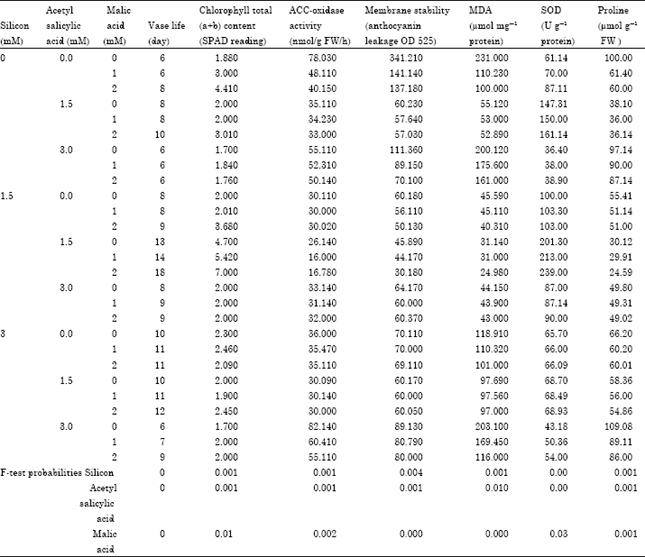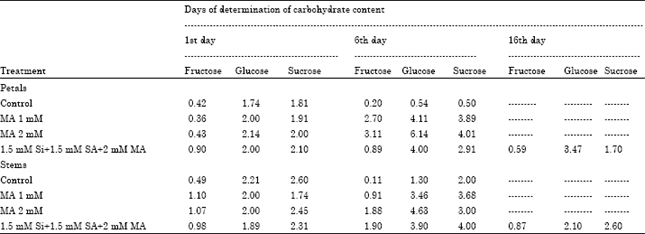Short Communication
Postharvest Life of Cut Lisianthus Flowers as Affected by Silicon, Malic Acid and Acetylsalicylic Acid
Young Researchers Club, Karaj Branch, Islamic Azad University, Karaj, Iran
M. Asadi
Department of Agronomy Sciences, College of Agriculture, Ilam Branch, Islamic Azad University, Ilam, Iran
S. Aghdasi
Department of Agronomy Sciences, College of Agriculture, Ilam Branch, Islamic Azad University, Ilam, Iran










